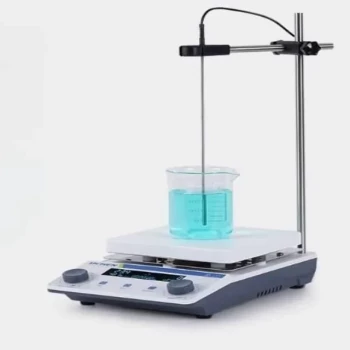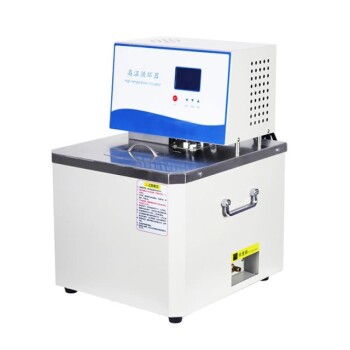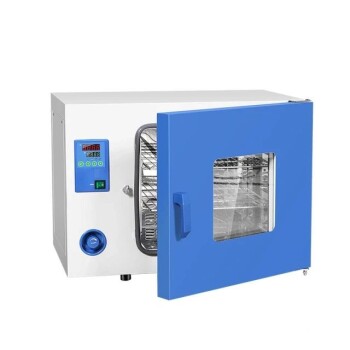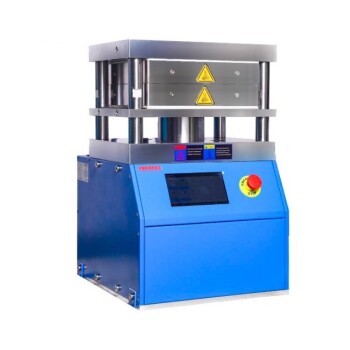Common Safety Hazards in the Use of Heating Equipment
Lack of Safety Measures
The absence of crucial safety measures in the operation of high-temperature equipment poses significant risks in laboratory settings. These oversights can lead to accidents, property damage, and even harm to personnel. Key issues include:
-
Lack of Warning Signs and Operating Procedures: High-temperature equipment often lacks safety warning signs and clear operating procedures, leaving users unaware of potential hazards and the correct methods to mitigate them.
-
Inadequate Spacing and Heat Dissipation: Equipment is frequently placed too close together, preventing proper heat dissipation. This not only reduces the efficiency of the equipment but also increases the risk of overheating and fire.
-
Proximity to Electrical Components: High-temperature equipment is often situated too close to distribution boxes, increasing the risk of electrical fires and short circuits.
-
Absence of Dedicated Sockets: There is a common lack of special fixed sockets designed for high-temperature equipment, which can lead to improper wiring and potential electrical hazards.
-
Storage Near Flammable Materials: Equipment is frequently stored near piles of combustible materials, significantly increasing the risk of fire if an accident occurs.
-
Unattended Operation: High-temperature equipment is often left unattended during use, which can lead to dangerous situations going unnoticed until it is too late.
-
Failure to Disconnect Power: Users frequently neglect to disconnect the electricity after using high-temperature equipment, posing a continuous risk of electrical accidents.
-
Neglect of Regular Maintenance: There is a common failure to regularly check the condition of equipment lines, leading to issues such as poor contact, aging, and breakage, all of which can cause safety hazards.
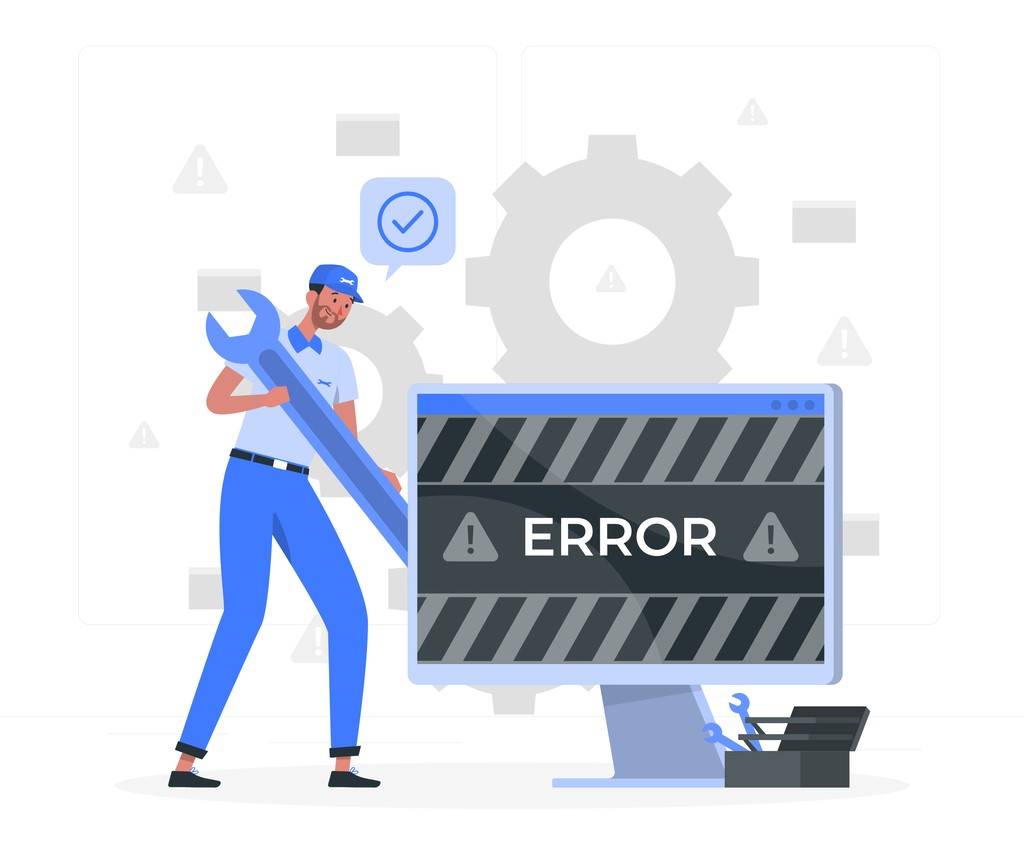
These deficiencies highlight the critical need for comprehensive safety protocols and regular inspections to ensure the safe operation of high-temperature equipment in laboratory environments.
Common Heating Equipment and Their Precautions
High Temperature Tube Furnaces
High temperature tube furnaces are meticulously designed for applications requiring controlled environments, particularly in laboratories where precise temperature regulation is crucial. These furnaces are often equipped with multiple heating zones, each capable of independent temperature control, ensuring uniform heating across the sample. The use of alumina tubes, though essential for high-temperature operations, necessitates careful handling due to their susceptibility to thermal shock. The smaller the diameter of the process tube, the more efficient the heat transfer, making these furnaces ideal for small workspaces.
When operating a high-temperature tube furnace, several critical precautions must be adhered to:
-
Placement and Environment: The furnace should be situated in an area free from flammable, explosive substances, corrosive gases, and other hazardous materials. This ensures that the furnace's exterior remains cool and heat can dissipate easily.
-
Temperature Management: It is strictly prohibited to introduce or remove materials from the furnace tube when the temperature exceeds 100°C. Rapid cooling by opening the furnace lid should also be avoided. Instead, the furnace should be allowed to cool naturally before any operational changes are made.
-
Ventilation and Airflow: In situations requiring ventilation, continuous monitoring and adjustment of airflow are necessary to maintain stability. Additionally, the air outlet should be equipped with a backsiphonage prevention device and an exhaust gas collection system to ensure safe operation.
-
Heating Rate Control: When using a cold furnace, the initial heating phase absorbs a significant amount of heat. Therefore, the heating rate in the low-temperature section should not be too rapid. The rate of heating should be set considering the physical and chemical properties of the material being sintered to prevent violent reactions and excessive internal pressure.
-
Support for Corundum Tubes: If the furnace employs a corundum tube, the flanges at both ends must be supported by a dedicated frame. This prevents the corundum tube from experiencing vertical stress at high temperatures, which could lead to bending or fracture under pressure.
-
Electrical Checks: Regular inspections of the electrical connections in the temperature control system are essential. Particular attention should be paid to ensuring that the connection points of the heating elements are securely fastened.
-
Program Verification: Before initiating the use of the high-temperature tube furnace, it is imperative to verify the program settings to prevent the furnace from inadvertently executing other heating procedures after the scheduled program has concluded.
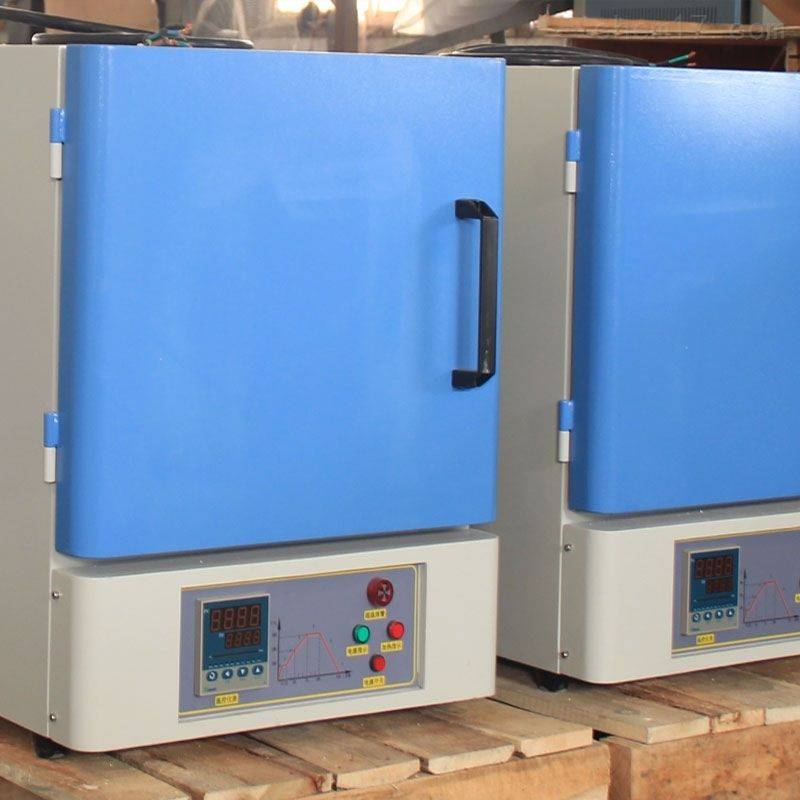
By adhering to these guidelines, the safe and efficient operation of high-temperature tube furnaces can be ensured, minimizing risks and maximizing the effectiveness of laboratory processes.
Muffle Furnace
Placement and Electrical Safety
The muffle furnace should be securely placed on a robust concrete table. Ensure that it is equipped with appropriate plugs, sockets, and fuses that match its power requirements. Grounding the furnace is crucial to mitigate electrical hazards.
Operational Environment
The working environment must be free from flammable and explosive substances, as well as corrosive gases. Liquid samples, including water, oil, and other volatile liquids, should never be roasted inside the furnace. Directly pouring molten metals or other liquids into the furnace chamber is strictly prohibited. Regularly maintain the cleanliness of the furnace chamber to prevent any potential hazards.
Temperature Management
The operating temperature of the furnace chamber should never exceed the maximum allowable temperature. Prolonged operation at the rated temperature is also discouraged. During experiments, users should remain vigilant, continuously monitoring temperature changes. In the event of any anomalies, immediately disconnect the power supply and consult professional maintenance personnel for repairs.
Handling Precautions
When closing or opening the furnace door, do so gently to avoid damaging machine components. Use crucible tongs carefully when placing or removing samples to ensure safety and prevent damage to the furnace chamber.
Cooling Procedures
Do not open the furnace door if the internal temperature exceeds 600℃. Allow the furnace chamber to cool naturally before opening the door. After completing an experiment, remove the heated sample and turn off the power supply. When placing a sample back into the furnace, slightly open the door and wait until the sample has cooled slightly before carefully clamping it to avoid burns.
Post-Experiment Handling
After roasting, do not open the furnace door immediately. Use long-handled crucible tongs to remove the heated items once they have cooled. Transfer crucibles to a dryer for further cooling, placing them on a buffer refractory material to prevent moisture absorption and potential cracking. Weigh the crucibles only after they have fully cooled.
Maintenance and Storage
When the muffle furnace is not in use, ensure the power supply is cut off and the door is closed to protect the refractory materials from moisture erosion. When handling the furnace, avoid causing significant resonance and place it away from flammable, explosive, and water-based items. Lifting the furnace door is strictly prohibited to prevent damage.
Personal Protective Equipment (PPE)
Given the high temperatures involved, users should wear appropriate protective gloves and eyewear. The type of gloves selected should be suitable for the temperature range being worked with. Additional glove options can be found in the drawer below the muffle oven.
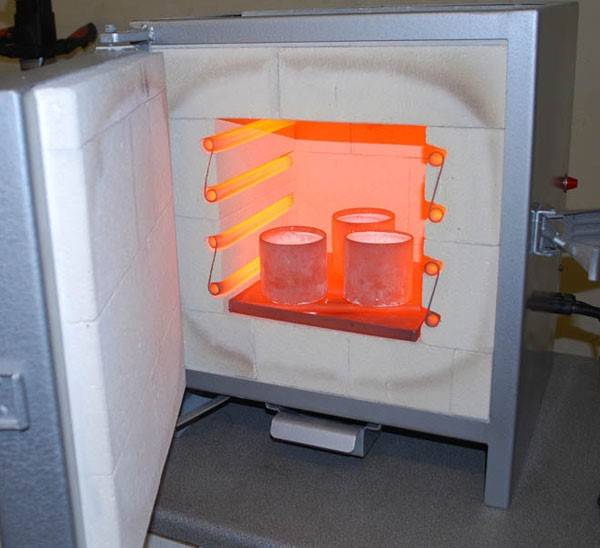
Oven
(1) The oven should be placed in a dry and horizontal indoor location to prevent vibration and corrosion. Ensure that the surrounding environment is free from flammable, explosive substances, corrosive gases, and other hazardous materials.
(2) Electrical safety is paramount. Install a power supply switch with sufficient capacity according to the oven's power consumption. Use a power cord that can handle the load and ensure proper grounding to mitigate electrical risks.
(3) When placing test products inside, avoid overcrowding to ensure proper airflow. Do not place cooling plates directly on the products, as this can impede the upward flow of hot air. Prior to baking, determine the material properties; common flammable items like paper, labels, glue bottles, and plastic cups are strictly prohibited. Avoid baking flammable, explosive, volatile, or corrosive substances.
(4) For observation of samples inside the working chamber, use the glass door. Minimize door openings, especially when the oven is operating at 200°C or higher, to prevent sudden temperature changes that could cause the glass to shatter.
(5) For ovens equipped with a blower, ensure it is turned on during the heating process to maintain temperature uniformity and protect the heating elements from damage.
(6) After completing the oven's operation, promptly cut off the power supply for safety. Keep both the interior and exterior of the oven clean. Use temperatures that do not exceed the oven's maximum operating limit to avoid scalding. Use appropriate tools for handling test pieces.
(7) Avoid prolonged use of the oven, typically limiting operational duration to 12 years. Extended use without approval can pose additional risks and may require special considerations.
Blast Drying Oven
Before powering on the blast drying oven, it is crucial to conduct a thorough inspection of its electrical components. This includes checking for any signs of disconnection or leakage to ensure safe operation. Additionally, the oven should be placed in a dry, level area, away from flammable and explosive substances to prevent any potential hazards.
During operation, the oven's thermostat should be utilized to maintain a constant temperature, minimizing the need for manual intervention. To observe samples within the drying chamber, the outer door can be opened slightly, allowing a view through the glass door. However, frequent opening of the door should be avoided to prevent temperature fluctuations and potential damage to the glass.
For maintenance and troubleshooting, the side door should only be removed when the oven is not in use and only if there is a suspected fault. This ensures that the electrical wiring remains undisturbed and intact. Importantly, the blast drying oven is not explosion-proof, so it is essential to avoid placing any flammable or volatile substances inside, as this could lead to a hazardous explosion.
In summary, proper usage and maintenance of the blast drying oven involve careful electrical checks, reliance on automatic temperature control, minimal door openings for observation, and strict adherence to safety protocols to prevent any mishaps.
Autoclave Sterilizer
Before initiating the sterilization process, it is crucial to verify the water level within the autoclave to ensure optimal performance and safety. Adequate water ensures that the steam generation is sufficient for effective sterilization, preventing any potential damage to the equipment.
Ensuring proper exhaust is another critical step. Prior to starting the sterilization cycle, exhaust the autoclave thoroughly to remove any residual air. This step is essential as it allows the steam to reach all surfaces, ensuring complete sterilization.
To expedite the sterilization process, preheating the autoclave for approximately 20 to 30 minutes can significantly reduce the overall cycle time. This preheating phase helps in stabilizing the internal temperature and pressure, making the subsequent sterilization more efficient.
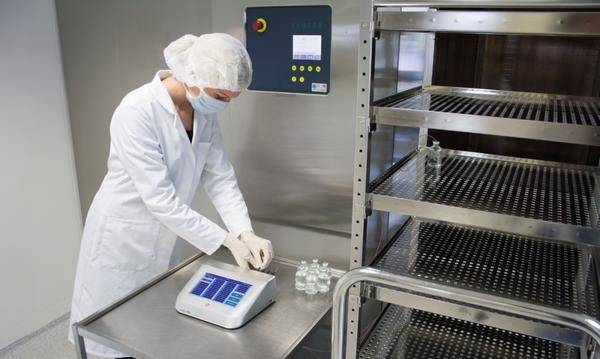
Handling items within the autoclave requires caution to avoid steam burns. Wearing heat-insulating gloves can provide necessary protection when placing or retrieving items, ensuring safety during these operations.
Regular maintenance includes draining the autoclave periodically to remove any accumulated sediments or impurities. This practice not only extends the lifespan of the equipment but also ensures consistent performance.
When dealing with locked parts, avoid using excessive force. If any leakage is detected, discontinue use immediately and address the issue promptly. Proper operation of all parts is essential to prevent accidents and ensure the longevity of the autoclave.
At the conclusion of the sterilization process, exercise patience. Do not open the lid until the pressure gauge indicates zero to prevent high-temperature steam burns. This precaution ensures safety and prevents any potential hazards associated with sudden pressure changes.
Hydrothermal Kettle
When operating a hydrothermal kettle, safety must be the foremost consideration. Begin by formulating comprehensive safety operation regulations and prominently displaying them. Prior to each use, conduct a thorough inspection of both the internal and external conditions of the kettle. This includes checking for any foreign matter, cracks, or deformations that could compromise the integrity of the equipment.
Ensure that the reaction kettle and its liner are used in tandem, and avoid using the same kettle for different experiments without proper cleaning and inspection. Different liners have specific temperature limits: PTFE liners should not exceed 200°C and are pure white, while para-polyphenylene material liners can withstand up to 260°C and are dark brown.
The filling volume of the reactor liner should be carefully managed. The maximum volume should not exceed two-thirds of the liner's actual capacity. This volume can be adjusted based on the specific reaction system, typically ranging between 20% and 50%. The general principle is that higher temperatures require smaller filling volumes to prevent pressure buildup and potential hazards.
Designing the chemical reaction involves considering the reactor's pressure and design temperature. This includes selecting appropriate precursors and solvent fillings. During the reaction process, maintain adequate ventilation within the workspace to prevent the accumulation of volatile gases. Personal protective equipment, such as goggles, should be worn to safeguard against potential splashes or leaks.
When heating the kettle, if the experimental temperature is high, it is advisable to use a step-by-step heating method, incrementing the temperature by 5-20°C per step. This gradual approach helps in managing the thermal stress and preventing sudden pressure changes.
Post-reaction, allow the kettle to cool naturally to room temperature. For hydrothermal kettles, this means waiting until the pressure is close to atmospheric pressure. Once cooled, transfer the kettle to a fume hood away from heat sources, water sources, and power supplies. Slowly relieve the pressure to prevent the risk of liquid splashing or gas overflow.
Regular maintenance is crucial. Ensure that the kettle body and inner liner are clean and free from excessive wear. Replace any damaged components promptly. For customized kettles, the tightening process should be meticulous, following a step-by-step approach until fully tightened without any gear mismatch.
After each use, clean the kettle shell and interior thoroughly and store them in a ventilated, dry environment to prevent corrosion and contamination. Stainless steel shells can be cleaned with a soft brush and mild detergent at room temperature.
Safety accessories, such as the safety valve, should be checked before each experiment and calibrated regularly. Additionally, monitor the liquid in the hydrothermal kettle for decomposition into pressurized gas. Design the reaction to avoid exceeding the kettle's controllable pressure range, thereby mitigating potential risks.
Electrothermal Constant Temperature Water Bath
-
Water Level Management: Ensure that an appropriate amount of water is added to the water bath, maintaining the water level above the electric heating tube to prevent it from overheating and potentially burning out.
-
Power Operation and Temperature Adjustment: Turn on the power and adjust the temperature to the desired setting. During operation, continuously monitor the water bath for any signs of leakage, which could pose safety risks.
-
Temperature Control Strategies: For lower working temperatures (close to room temperature +5°C), employ a two-step temperature setting method. For instance, if the target temperature is 37°C, initially set the temperature to 35°C. Once the temperature begins to drop, reset it to 37°C. This approach helps mitigate temperature overshoot and stabilizes the system more quickly.
-
Preventing Water Ingress: Avoid splashing water onto the control box to prevent electrical shorts and potential leakage issues.
-
Long-Term Storage: When the water bath is not in use for extended periods, drain the water to prevent rust formation and ensure the longevity of the equipment.
Electrothermal Constant Temperature Oil Bath
-
Personal Protection: Always wear safety gloves to protect your hands from burns.
-
Oil Selection: Choose the appropriate heat-conducting oil based on the instrument's performance requirements and the desired heating temperature. Ensure the amount of oil is sufficient to cover the heating tube completely without causing overflow during the heating process, thereby preventing dry burning.
-
Oil Condition Monitoring: Regularly inspect the heat transfer oil for signs of degradation such as water droplets, stratification, blackening, or increased viscosity. If the oil is contaminated with organic solvents, flammable substances, or exhibits smoke or splashing during heating, immediately discontinue use and replace it with fresh oil.
-
Power and Refueling Sequence: Always refuel the oil bath before applying power. Dry burning is strictly prohibited as it can damage the heating elements and pose a fire hazard.
-
Temperature Monitoring: Prior to initiating heating, ensure that the thermocouple or thermometer is correctly positioned within the oil bath to accurately measure the oil temperature.
-
Electrical Maintenance: Periodically check the screws at each electrical contact point to ensure they are not loose. Maintain good electrical contact and normal line connections to prevent overheating or short circuits.
-
Emergency Preparedness: For potential hazardous situations, have specific emergency plans in place, such as immediate power disconnection and using fire blankets to extinguish any fires.
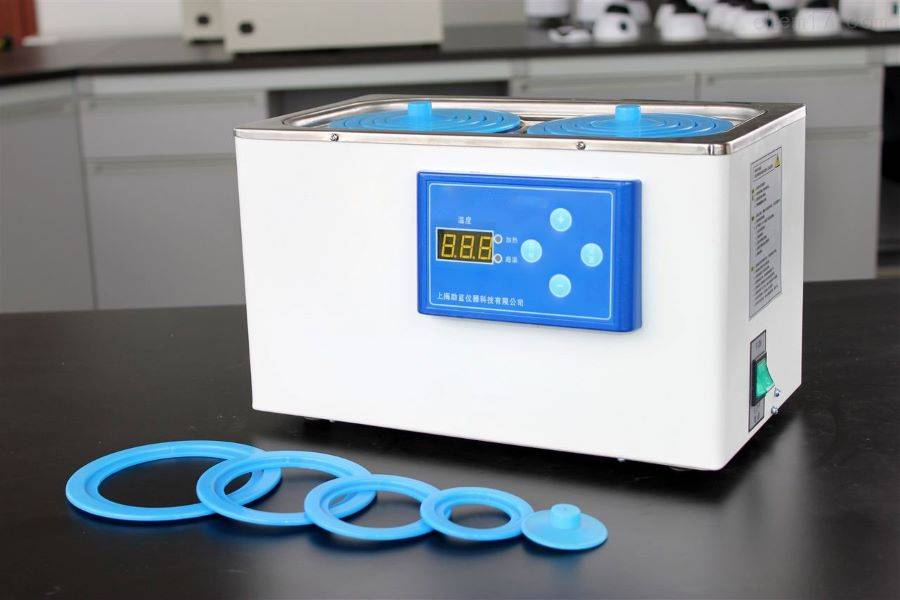
Conclusion
Summary of Safety Measures
Heating devices are indispensable tools in laboratory settings, often serving to maintain specific reaction temperatures and pressures. Given their frequent and prolonged use, these devices are among the most prone to causing safety hazards in the lab.
To mitigate these risks, several key safety measures must be adhered to:
- Operational Standardization: Always follow established safety protocols and ensure that all high-temperature equipment is clearly labeled with safety warnings and operating procedures.
- Space Management: Maintain adequate distance between heating devices to allow for proper heat dissipation and prevent overheating. Ensure that high-temperature equipment is not placed near distribution boxes or combustible materials.
- Electrical Safety: Use dedicated sockets for high-temperature equipment and regularly inspect electrical connections for signs of wear, such as loose connections or frayed wires.
- Supervised Operation: Never leave high-temperature equipment unattended during operation. Always disconnect the power source after use to prevent accidental starts.
- Personal Protective Equipment (PPE): Wear appropriate PPE, including heat-resistant gloves and face shields, to protect against potential burns or other injuries.
- Environmental Control: Maintain a clean and organized laboratory environment to reduce the risk of accidents. Ensure proper ventilation to disperse heat and fumes effectively.
By adhering to these guidelines, you can significantly reduce the risk of safety incidents involving heating equipment, ensuring a safer laboratory environment for everyone.
Related Products
- Laboratory Small Constant Temperature Heated Magnetic Stirrer Heater and Stirrer
- 1400℃ Muffle Oven Furnace for Laboratory
- 1700℃ Muffle Oven Furnace for Laboratory
- 1400℃ Laboratory Quartz Tube Furnace with Alumina Tube Tubular Furnace
- 1700℃ Laboratory Quartz Tube Furnace with Alumina Tube Tubular Furnace

